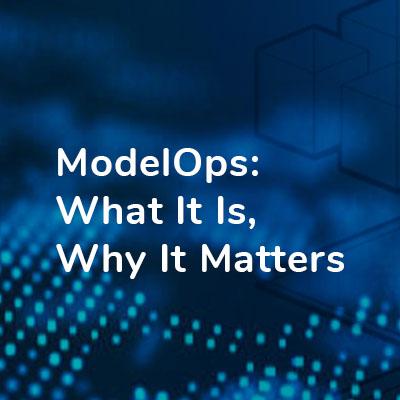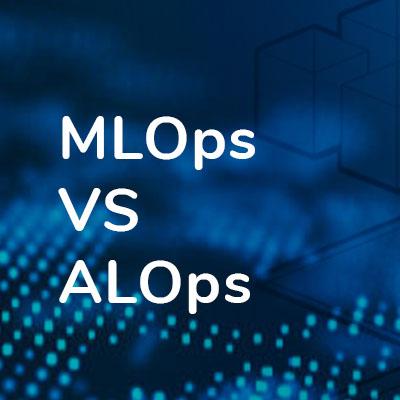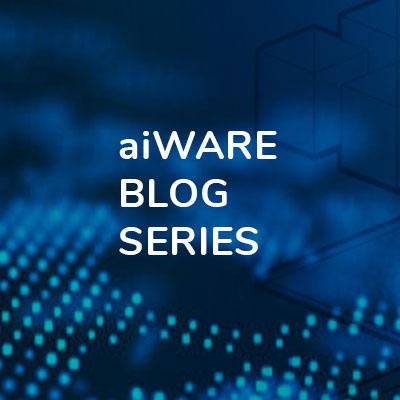Table of Contents
Types of MLOps Tools
Categories of MLOps Tools
Popular MLOps Tools
Leading End-to-End MLOps Platform: Veritone aiWARE
Need More Information on MLOps?
No matter where you’re at in your MLOps journey, there’s an ML tool that can make it easier, faster, or more accurate. In this, the final blog of our MLOps series, we’ll cover the tools of the craft. We’ll walk you through different types of ML tools and their various purposes. We’ll explain when it may be beneficial to opt for an all-in-one solution like aiWARE rather than purchase and implement dozens of siloed tools. After reading this blog, you’ll know exactly how to power every ML project that comes your way.
TYPES OF MLOPS TOOLS
As you search for the solution that can meet your needs and help you implement MLOps, you’ll find that there are different options available. You’ll need to take a closer look at open source vs proprietary options, as well as SaaS and on-premise.
Open source vs proprietary MLOps tools
Users of open source software can view, change, and distribute its source code for their own purpose, without cost. When you choose proprietary software, the source code is not publicly available. The companies that create this software are the only ones that can modify it.
SaaS vs on-premise MLOps tools
Software as a service (SaaS) offers access to applications. Users interact with an interface for the software through the web. On-premise software solutions are hosted in-house. This is usually more secure, but there are higher costs that come with managing and maintaining the required infrastructure.
All of these options are available for MLOps. You should make your choice based on your specific goals, internal knowledge, and budget.
CATEGORIES OF MLOPS TOOLS
After you make that choice, the next step is to figure out what tools you actually need to use. Here’s a closer look at the different categories of tools you’ll come across.
CI/CD
There’s a benefit to applying continuous integration and continuous delivery (CI/CD) practices when building a machine learning pipeline. Without a robust framework, it is becoming increasingly difficult to manage models at the enterprise level. That’s where CI/CD practices can help. This framework supports continuous improvement by helping you achieve better model performance and accuracy.
Data management
According to one expert, data science teams can spend up to 70% of their time acquiring, loading, and transforming the data before the machine learning process starts. Having a data management system in place is critical to success throughout the implementation of MLOps.
Life cycle management
There are several different stages in the MLOps life cycle, and monitoring throughout the process may send you back to an earlier step to make updates. Machine learning life cycle management tools make it easier to track all of your experiments over time.
Visualization
Data visualization tools allow you, along with every team member and key stakeholder, to see the big picture. Modern MLOps data visualization tools quickly and easily integrate with your data so you can start exploring and gathering insights right away. With full visibility into your pipelines, you’ll be able to optimize every step of the process, answer questions, make better decisions and prove ROI.
Optimization
Optimizing your machine learning pipelines enables you to speed up your workflows and move models into production more quickly—increasing your AI scalability. There’s a multitude of MLOps optimization tools that focus on the training of ML models, allowing you to automate both the building and optimization of your machine learning pipelines.
POPULAR MLOPS TOOLS
DVC
DVC is an open-source version control system for ML projects. It’s an experimentation tool that helps you define your pipeline regardless of the language you use. A great tool for tracking MLOps models and data sets, it makes models shareable and reproducible.
Pachyderm
Pachyderm is a data and pipeline versioning tool for machine learning projects. Integrate Pachyderm’s platform with your infrastructure/private cloud to automate data versioning. It also allows you to rapidly process large data sets of both structured and unstructured data.
Apache Airflow
Monitor, schedule and manage your workflows with Airflow’s robust web application. The platform is ready to scale with you, so you’ll always have full visibility into the status of both your completed and ongoing tasks.
Comet
If you’re specifically interested in experiment tracking and organization, you’ll want to consider Comet. Comet enables data scientists and teams to track, compare, explain and optimize experiments and models. It allows you to view and compare all of your experiments in one place, so you can improve your models and algorithms to drive real business value.
Cortex
Cortex offers containers as a service. It’s an open-source alternative to vendor tools or for those who do not want to build their own model deployment platform on top of AWS or Azure services. Cortex also offers CI/CD integrations like the type we discussed earlier in this article.
Optuna
An open-source hyperparameter optimization framework, Optuna automates the search for optimal hyperparameters using Python conditionals, loops, and syntax. And it’s framework agnostic, so you can use it with any machine learning framework.
Seldon Deploy
Seldon Deploy brings oversight and governance to your machine learning deployments. If you want to easily deploy your models in an audited way, this may be a good fit for you. Leverage advanced monitoring and perform alibi-powered explanations upon request with Seldon Deploy.
Bodywork
A model-training and deployment pipeline automation platform, Bodywork automates repetitive DevOps tasks. Of course, as we covered in a previous blog, DevOps is a large part of MLOps. So, automating these monotonous tasks is crucial to ML success as it frees up your team to focus on machine learning problems.
Bonus: Build Your Own ToolKit
Looking to build an ML toolkit at your organization? Check out some great options for purpose-built MLOps tools.
LEADING END-TO-END MLOPS PLATFORM: VERITONE AIWARE
If, rather than compiling a portfolio of tools (each with different features to tackle the various stages of the machine learning life cycle), you’d prefer to use a solution that combines many of the aforementioned tools in a single platform—check out Veitone aiWARE.
The 6 stages of the MLOps lifecycle that this solution can help you with are:
- Training – Model training on your data
- Evaluation – Evaluate which models perform best on your data
- Integration – Integrate your models with systems and processes
- Deployment – Deploy into production
- Scaling – Scale up and out
- Monitor – Monitor for drift of performance, cost, or behavior
aiWARE includes hundreds of pre-trained or trainable, ready-to-deploy ML models for unstructured data insight, and also makes it easy to onboard your own models. It streamlines everything from ML model training through deployment and scaling. It even provides post-production results benchmarking.
Fast, scalable, and easy-to-implement, Veritone aiWARE enables ML teams to rapidly productize models and workflow integrations that solve real-world business problems and deliver true value right away. And Veritone’s AI Object Notation media format makes it easy to try different models across multiple vendors, daisy chain models, and integrate model results, so you can customize the solution to your individual business needs.
NEED MORE INFORMATION ON MLOPS?
This is the final post in an in-depth series on MLOps. If you haven’t read them already, check out the other articles in this series below:





